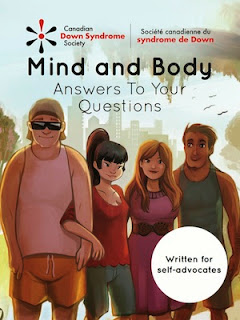This time of the year, many families happily anticipate the coming holiday season. For families with children with exception needs, the upcoming days may be filled with new and unexpected situations and challenges, especially when schedules are disrupted and routines broken. Here's a few hints that I think are really great. It's a longer blog, but worth reading. Happy Holidays to you and Yours!
1. Preparation is crucial for all families. It is important to first determine how much preparation may be needed. For example, if your child has a tendency to become anxious when anticipating an event, you may want to adjust the number of days in advance you prepare him or her. Preparation can occur in various ways by using a calendar and marking the dates of various events, or by creating a social story that highlights what will happen at a given event or time.
2. Decorations around the house may be disruptive. It may be helpful to visit pictures from previous holidays that show decorations in the house. It may also be helpful to take them shopping with you for holiday decorations so that they are engaged in the process, or involve them in the process of decorating the house. Once holiday decorations have been put up, you may need to create rules about what can and cannot be touched.
3. If a family member has difficulty with change gradually decorate the house. For example, on the first day, put up the Christmas tree, then on the next day, decorate the tree, and so on. Again, engage your family as much as possible. It may be also helpful to develop a visual schedule or calendar that shows what will be done on each day.
4. Making Santa safe and fun for families. If you plan to visit Santa, if possible talk to him ahead of time to see if he can be extra understanding and gentle with your child. Explain that your child may not feel comfortable sitting on Santa’s lap or maybe your child can hold your hand or a favorite toy when they talk to Santa.
Not visit Santa? An alternative may be a letter written to Santa. You can make a specially decorated mail box that delivers letters straight to the North Pole, or you can arrange a special call from Santa. Your child may enjoy telling Santa what they want for Christmas over the phone rather than in person or remember Santa does have email! Check out your local Malls as well, they may have a 'sensitive santa" option.
5. Teach your child how to leave a situation or get support when an event becomes overwhelming. If you are having visitors, have a space set aside for the child as a calm space and teach them to find that space in times of uneasiness.
6. Traveling for the holidays? Make sure to bring your child’s favorite foods, books or toys. Having familiar items available can help to calm stressful situations. Also, prepare your child via social stories or other communications for any unexpected occurrences while traveling. Use social stories and pictures to rehearse what will happen when traveling.
7. Holiday Parties: making your child feel comfortable and safe. When you are invited to a holiday party make plans in advance to keep your child safe and happy. Find ways to make your child feel secure in this strange situation bring their favorite teddy bear or toy for them to hold and play with. Try to find a room with less lights and music that presents a more soothing atmosphere. Other ways to entertain your child include, bringing a special Holiday video they can watch along with the other children, or perhaps a new book will keep them content. And finally, know you have the option of having a babysitter stay at home with your child.
8. Prepare a photo album in advance of the relatives and other guests who will be visiting during the holidays.Allow your child access to these photos and also go through the photo album with them while you talk about each family member.
9. Practice opening and giving gifts, taking turns, and responding appropriately. Role play with your child to prepare them for getting a gift they may not want. Talk them through this process to avoid embarrassing moments with family members.
10. Prepare family members for how to help minimize anxiety or behavioral incidents. Help them to understand if your child prefers to be hugged or not, needs calm discussions, or provide other suggestions that will help create a smooth holiday season. If your child becomes upset, it might also be helpful to coach others to remain calm and neutral in an effort to minimize behavioral outbursts.
11. If your child is on special diet, make sure there is food available that he/she can eat. Even if they are not on a special diet, be cautious of the amount of sugar consumed and try to maintain a sleep and meal routine.
12. Above all, know your loved child. Know how much noise and other sensory input they can take. Know their level of anxiety and the amount of preparation it may take. Know their fears and those things that will make the season more enjoyable for everyone.





































